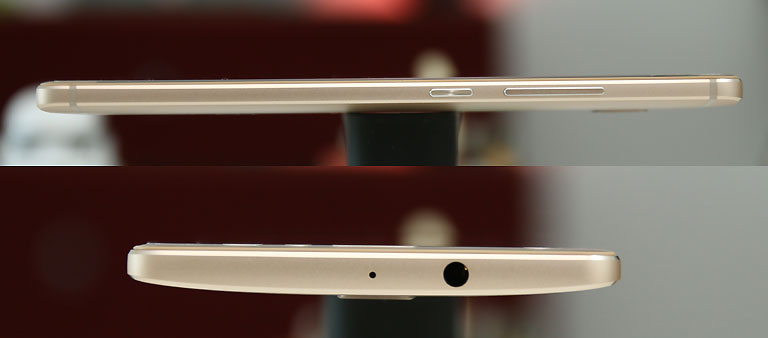Huawei’s successor to the highly regarded Mate 7 phablet is the smaller yet faster version called the Mate S. It’s as if Huawei merely wanted the standard-sized version of the Mate 7. Make no mistake — the upgrade might look incremental on the outside but there’s actually a lot of improvements just under the hood.
Also read: Huawei Mate 7 Review and Huawei P8 Review.
Huawei carried out the same design of the series in the Mate S although there are some details that were derived from the Huawei P8 as well. It’s like they combined the best features of the P8 and the Mate 7 to create the Mate S (the front side looks like the P8 and the back side looks like the Mate 7).
The handset is made up of a single solid aluminum alloy with chamfered edges allowing it to be really slim (7.2mm) and sleek.

The fingerprint sensor is still positioned at the back just below the camera lens for easy access while the power and volume controls are on the right side.
The front panel is completely covered with the glass display that stretches from edge to edge and protected by Gorilla Glass 4. The corners are a bit rounded along the edges and the glass slightly curving towards the edges before it is cut by the metal frame. There is also a small slit on the glass along the upper corner for the speakerphone.

The SIM card cradle is found on the left side and pops up when you punch the pinhole. As usual, the Mate S supports 2 nano SIM cards with one tray able to support a microSD card as well. As for the micro-USB port, it is found at the bottom end with speaker grills positioned on each side.

The slight curve at the back makes handling more comfortable and easier to grip compared to the P8 which has flat backside.
| Huawei Mate 7 | Huawei Mate S | |
|---|---|---|
| Display Size | 6.0 inches | 5.5 inches |
| Height | 157 mm | 149.8 mm |
| Width | 81 mm | 75.3 mm |
| Thickness | 7.9 mm | 7.2 mm |
| Screen-to-Body Ratio | 83% | 73.9% |
Comparing the dimensions between the two, the Mate 7 is taller wider and thicker than the Mate S. The Mate S is also lighter at just 156 grams.

YugaTech.com is the largest and longest-running technology site in the Philippines. Originally established in October 2002, the site was transformed into a full-fledged technology platform in 2005.
How to transfer, withdraw money from PayPal to GCash
Prices of Starlink satellite in the Philippines
Install Google GBox to Huawei smartphones
Pag-IBIG MP2 online application
How to check PhilHealth contributions online
How to find your SIM card serial number
Globe, PLDT, Converge, Sky: Unli fiber internet plans compared
10 biggest games in the Google Play Store
LTO periodic medical exam for 10-year licenses
Netflix codes to unlock hidden TV shows, movies
Apple, Asus, Cherry Mobile, Huawei, LG, Nokia, Oppo, Samsung, Sony, Vivo, Xiaomi, Lenovo, Infinix Mobile, Pocophone, Honor, iPhone, OnePlus, Tecno, Realme, HTC, Gionee, Kata, IQ00, Redmi, Razer, CloudFone, Motorola, Panasonic, TCL, Wiko
Best Android smartphones between PHP 20,000 - 25,000
Smartphones under PHP 10,000 in the Philippines
Smartphones under PHP 12K Philippines
Best smartphones for kids under PHP 7,000
Smartphones under PHP 15,000 in the Philippines
Best Android smartphones between PHP 15,000 - 20,000
Smartphones under PHP 20,000 in the Philippines
Most affordable 5G phones in the Philippines under PHP 20K
5G smartphones in the Philippines under PHP 16K
Smartphone pricelist Philippines 2024
Smartphone pricelist Philippines 2023
Smartphone pricelist Philippines 2022
Smartphone pricelist Philippines 2021
Smartphone pricelist Philippines 2020
Zobel says:
Why not use Snapdragon soc? It’s the best out there
Toto says:
Coz huawei wants to prove that they are capable of making their own chipset and indeed its a successs.
taesilog says:
Mediatek’s newly released socs are good, i’ve just bought the redmi 6 and it has a p22 soc. No issues so far.